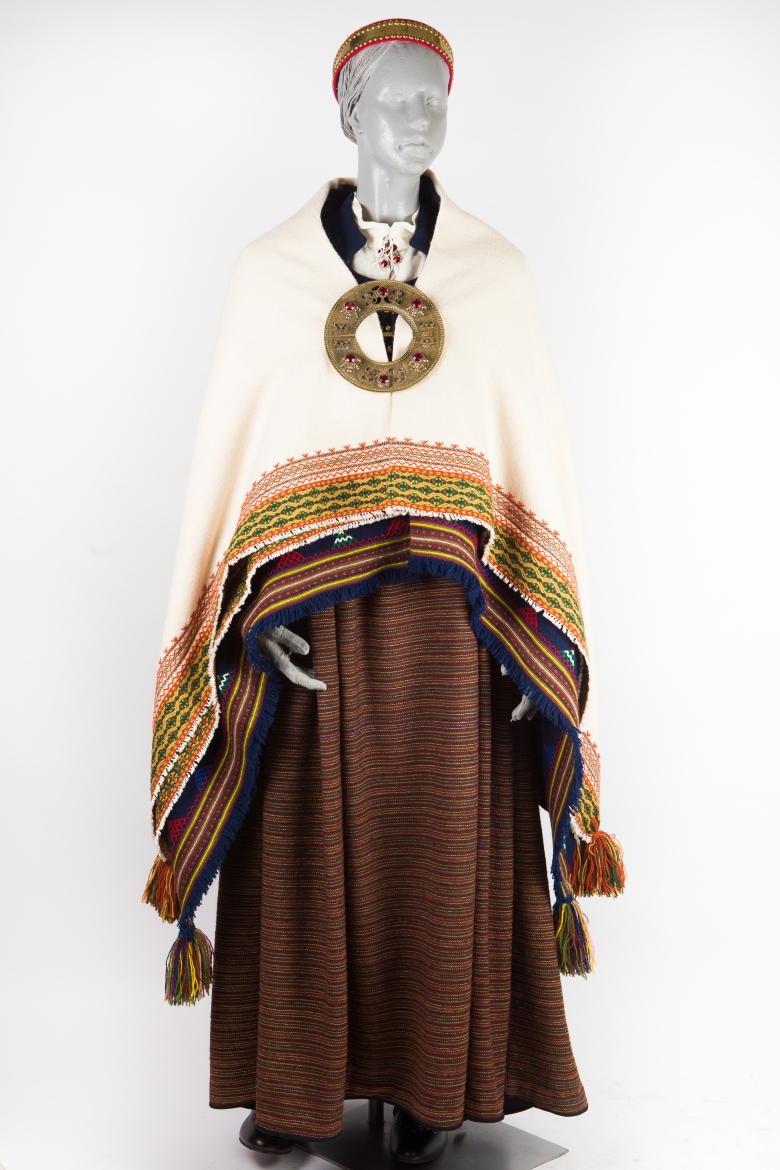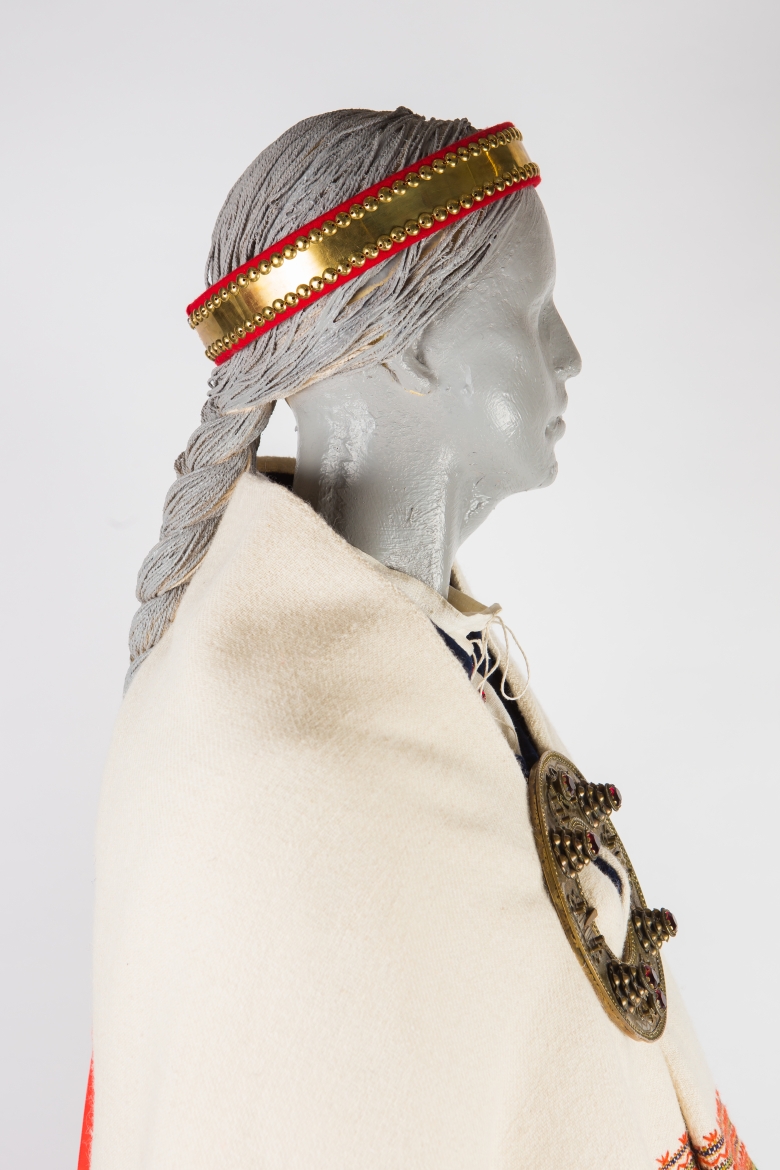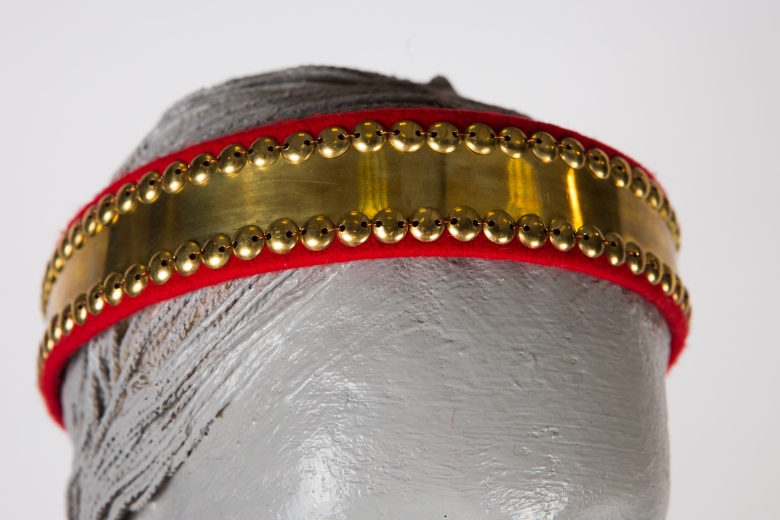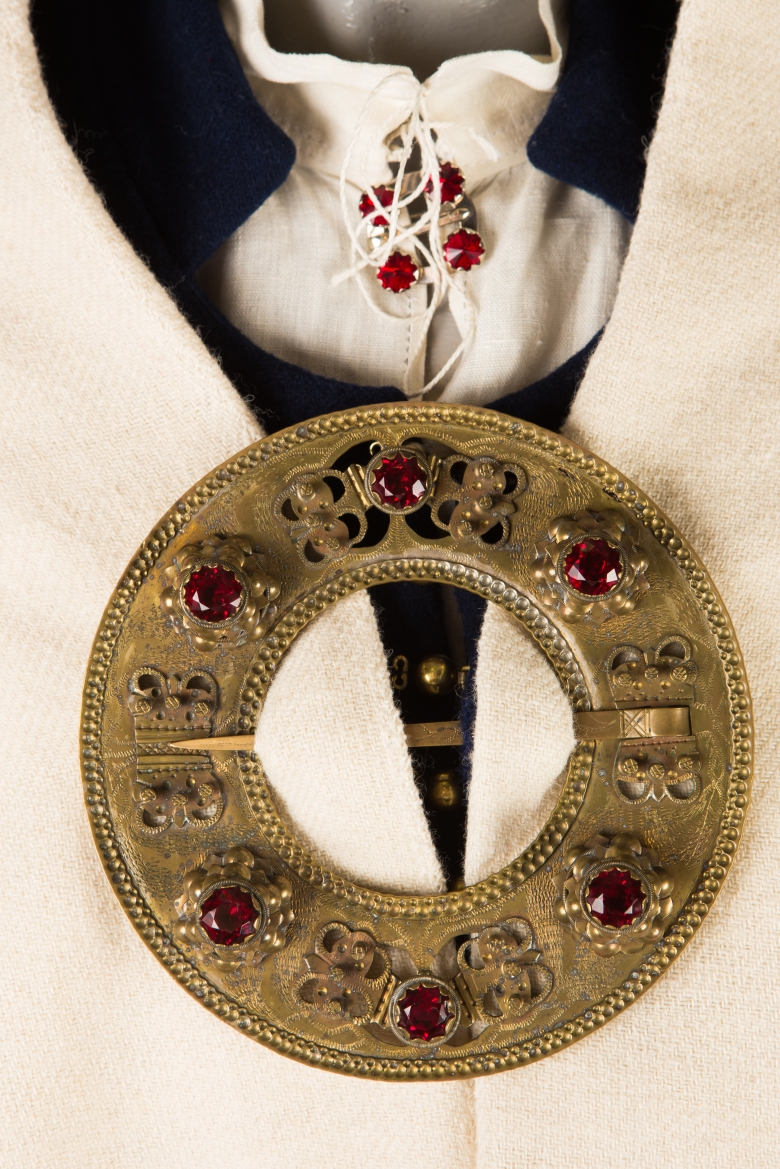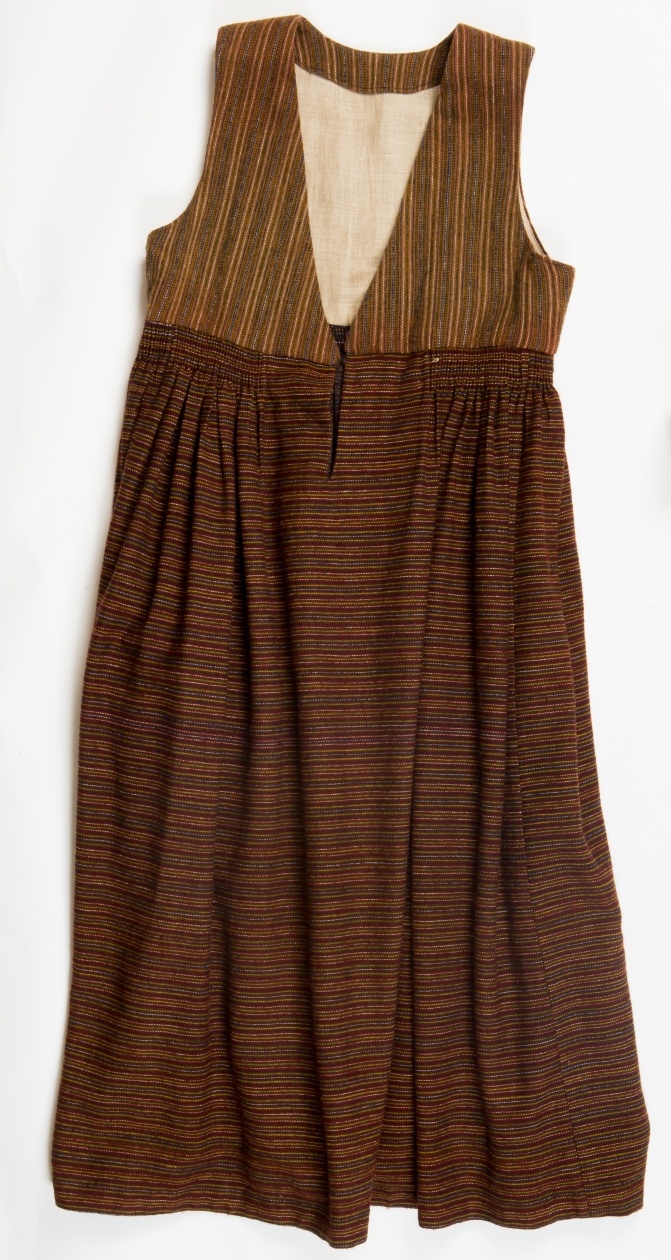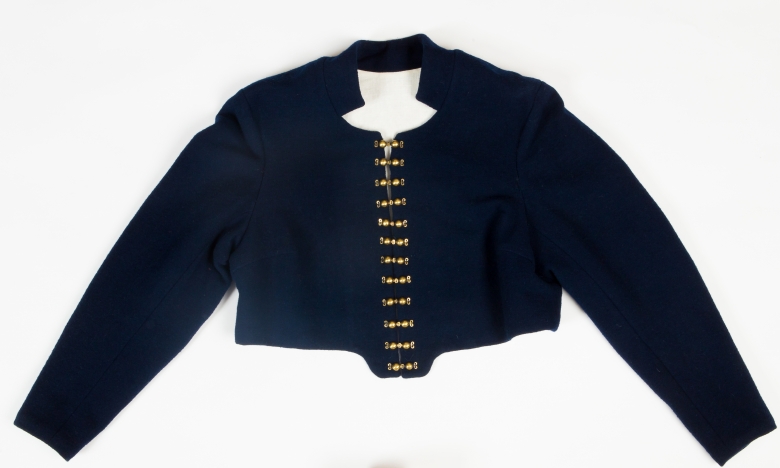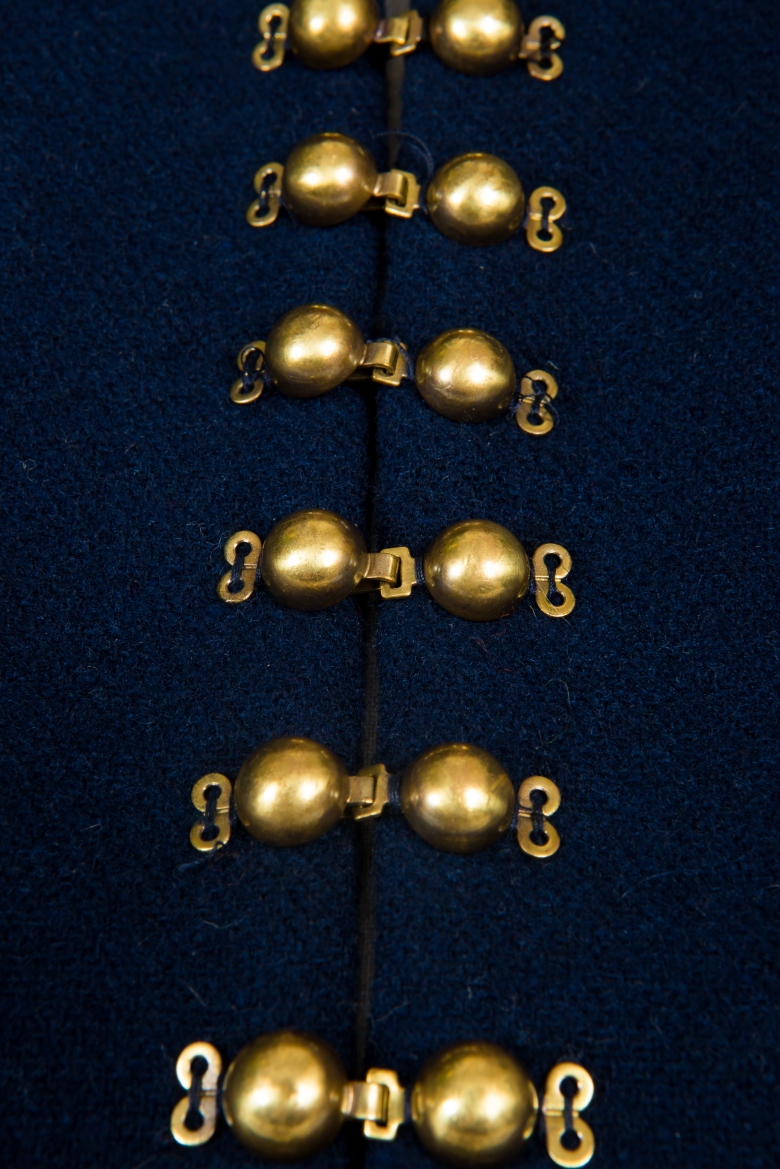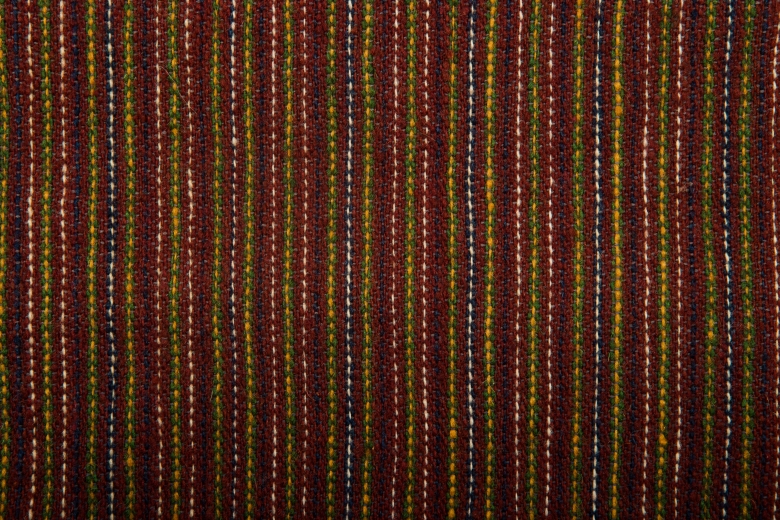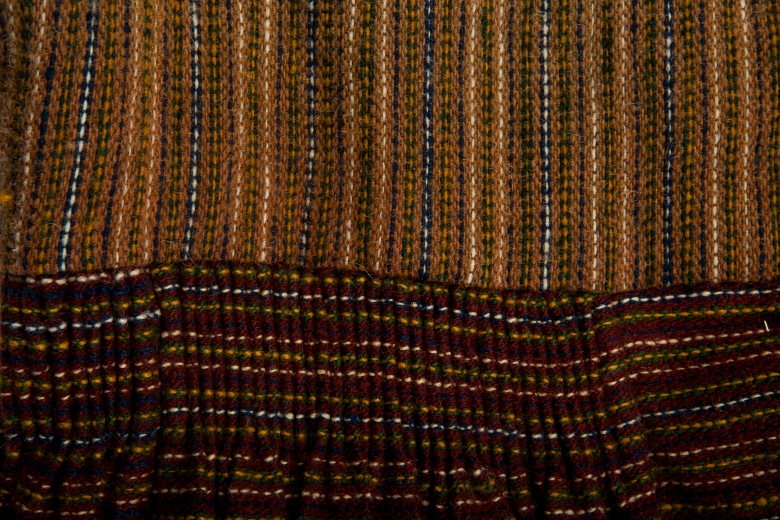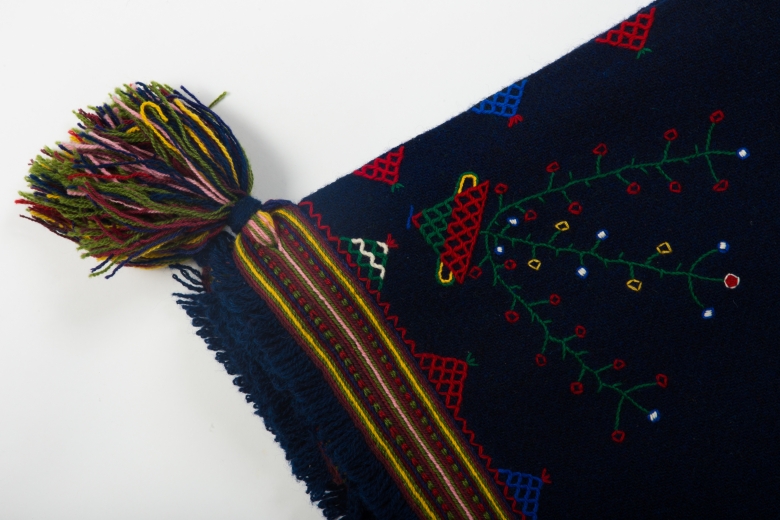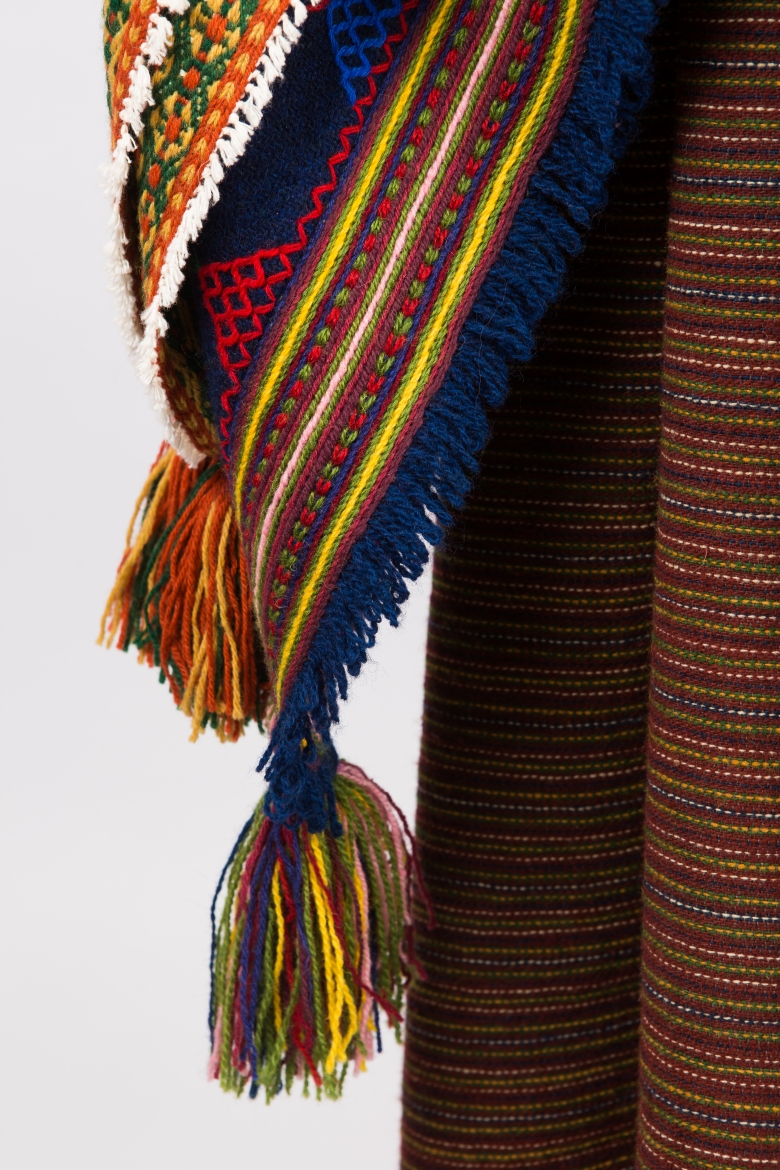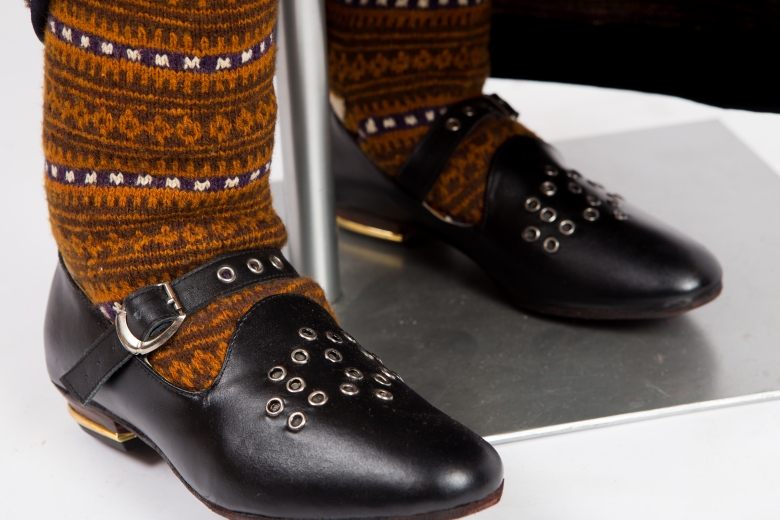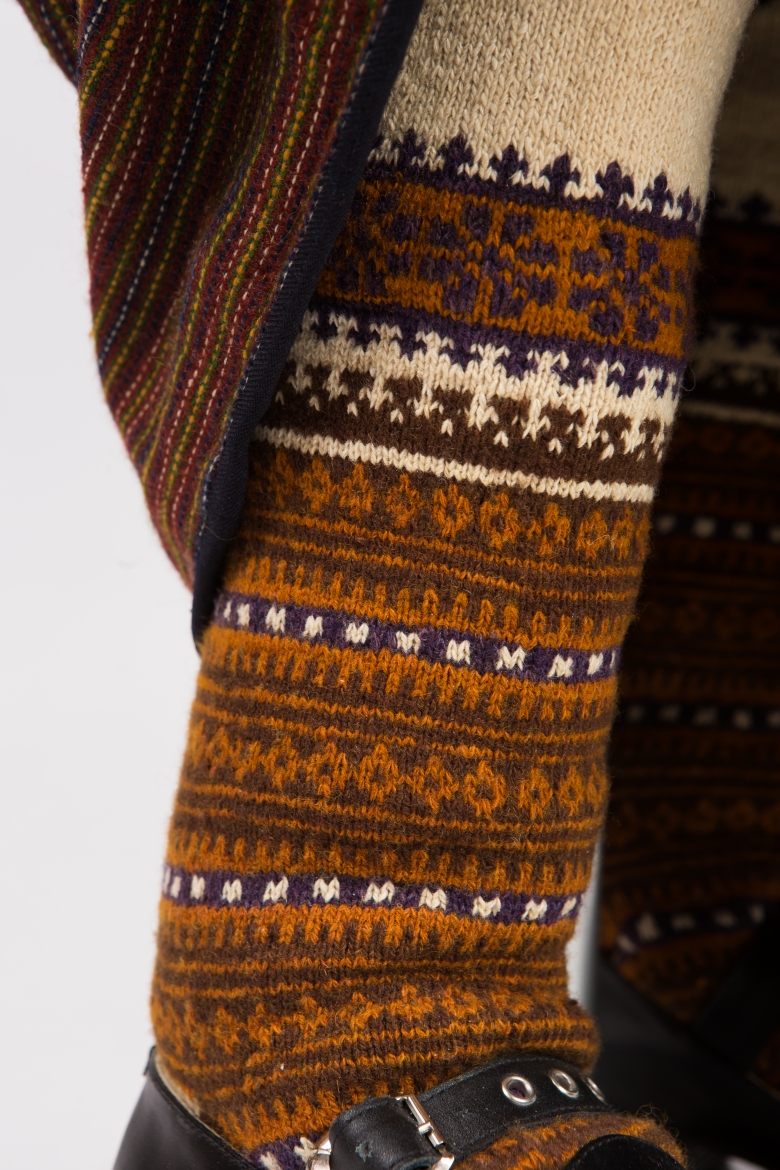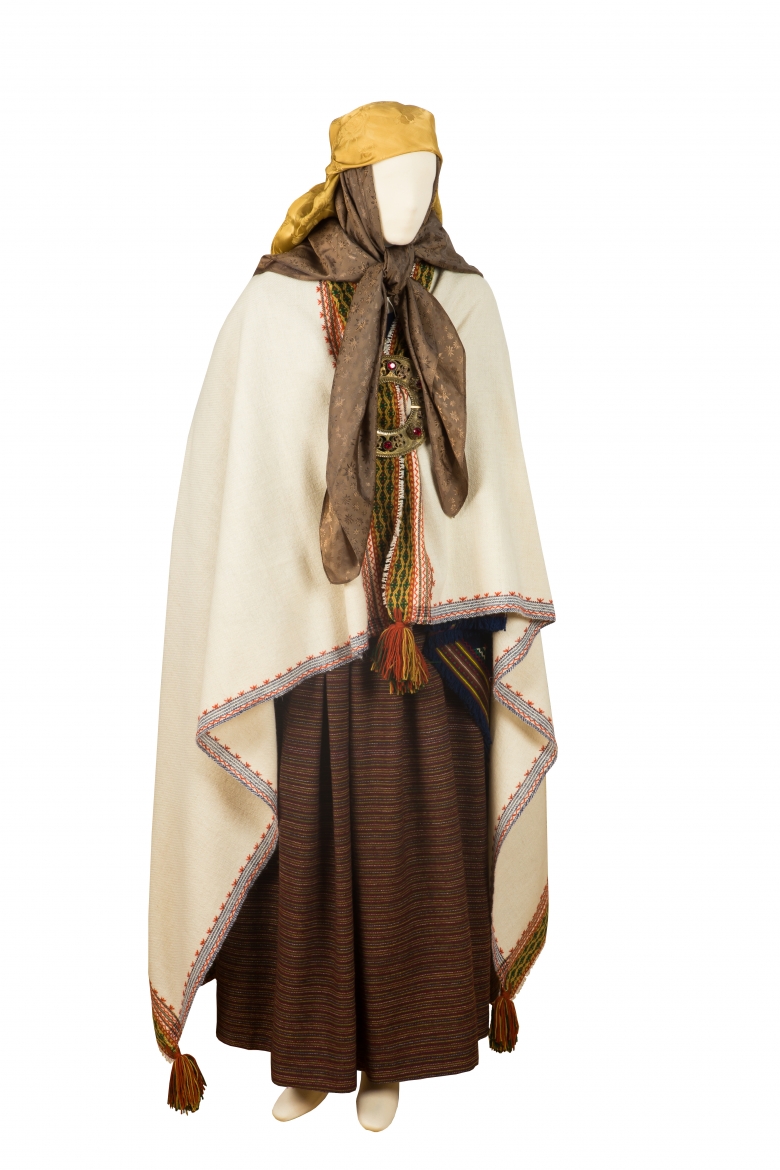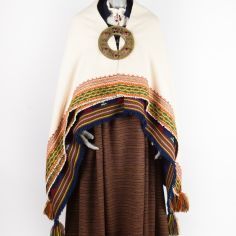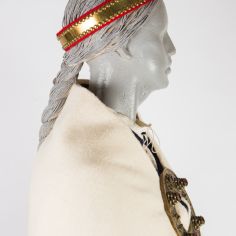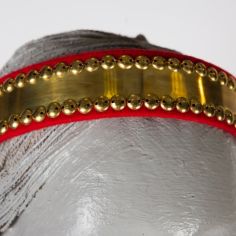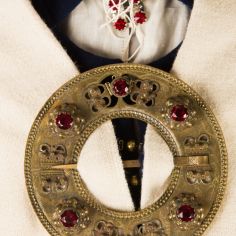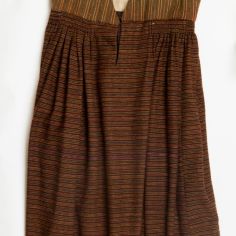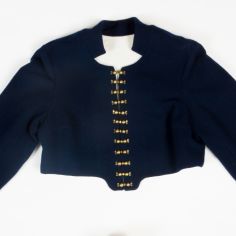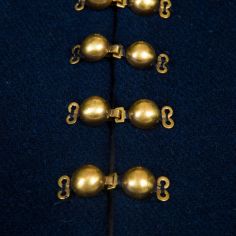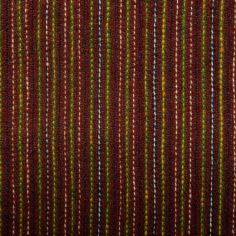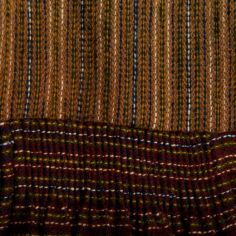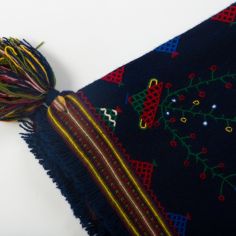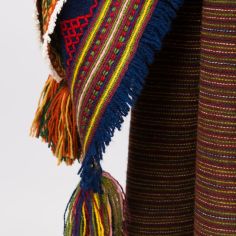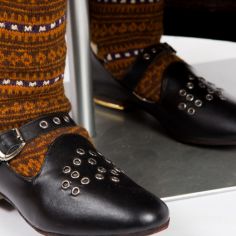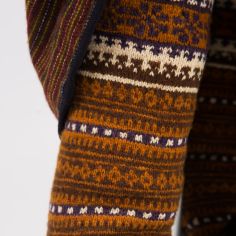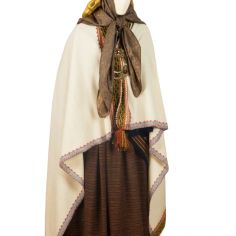Women’s Clothing from Ventspils
Brief information
- Shirts – straight cut, mid-calf length with whitework embroidery and a stand-up collar;
- Skirts – jumper-type dresses of pinstriped wool with a raised waistline and attached bodice of different fabric. Rusty red hues tend to dominate;
- Belts – brass chain belts with engraved or embossed front panels (sleņģene)
- Jackets – short, covering the bodice, fastened with small brass button hooks;
- Shawls – several types, including white Shawls with multi-coloured embellishment, dark blue with multi-coloured embroidery, and a black and white plaid;
-
Headdresses:
- An unmarried woman wore a plain, bronze band coronet-type vainags, edged with spangles (small, domed discs), fastened to a red or green fabric base;
- Married women wore two silk headscarves, one over the other;
- Legwear – knitted patterned knee-length socks in brown hues;
- Jewellery – shawls were fastened with large bronze disc brooches (saktas), set with a number of polished glass stones; shirts were fastened with small to medium size annular brooches (saktas) or fabric ribbons.
History and Origin
Women’s clothing from the Ventspils district in the province of Kurzeme is characterized by linen shirts in one of two styles, either two separate, rectangular fabric pieces sewn together at the shoulders, while the other has a one piece body, where the front and back consist of one contiguous piece of fabric folded over at the shoulders. The shirt has an upright collar and whitework embroidery on the collar, shoulder straps, and cuffs, fastened with small to medium size annular brooches (saktas) or fabric ribbons.
Skirts were fashioned with an attached bodice and a raised waistline of pinstriped wool fabric in rusty red hues. The bodice could be made of a different striped fabric.
Belts were handmade bronze chain belts with embossed or engraved front panels.
Jackets are short and cover the bodice. They tend to be dark in colour and fastened with many small buttons or a row of decorative brass button hooks.
There are three types of Shawls: dark blue, white and plaid. The dark blue ones, considered to be the oldest type, had deep tablet-woven borders and multi-coloured embroidery. The white Shawl had both embroidered and interwoven bands of multi-coloured embellishment, as well as tablet-woven borders. Both the blue and white Shawls had a large woollen tassel in each corner. The plaid Shawl had uniform, small black and white checks with a rusty red border. These Shawls were worn over both shoulders, either separately or together, and fastened in the front with a large silver or brass disc brooch (sakta) with relief-work ornamentation, often set with polished red glass stones.
Unmarried women wore a narrow plain brass band coronet-type vainags, edged with spangles (small, domed discs), fastened to a red or green fabric base.
Married women wore two silk headscarves, one over the other.
Legwear included knitted knee-length socks with small-scale patterns, tied below the knee with woven patterned bands.
Footwear consisted of closed, low-heeled black shoes, fastened with a cord or leather strap.
